How To Make PowerPoint Full Screen on Any Projector In 3 Simple Steps
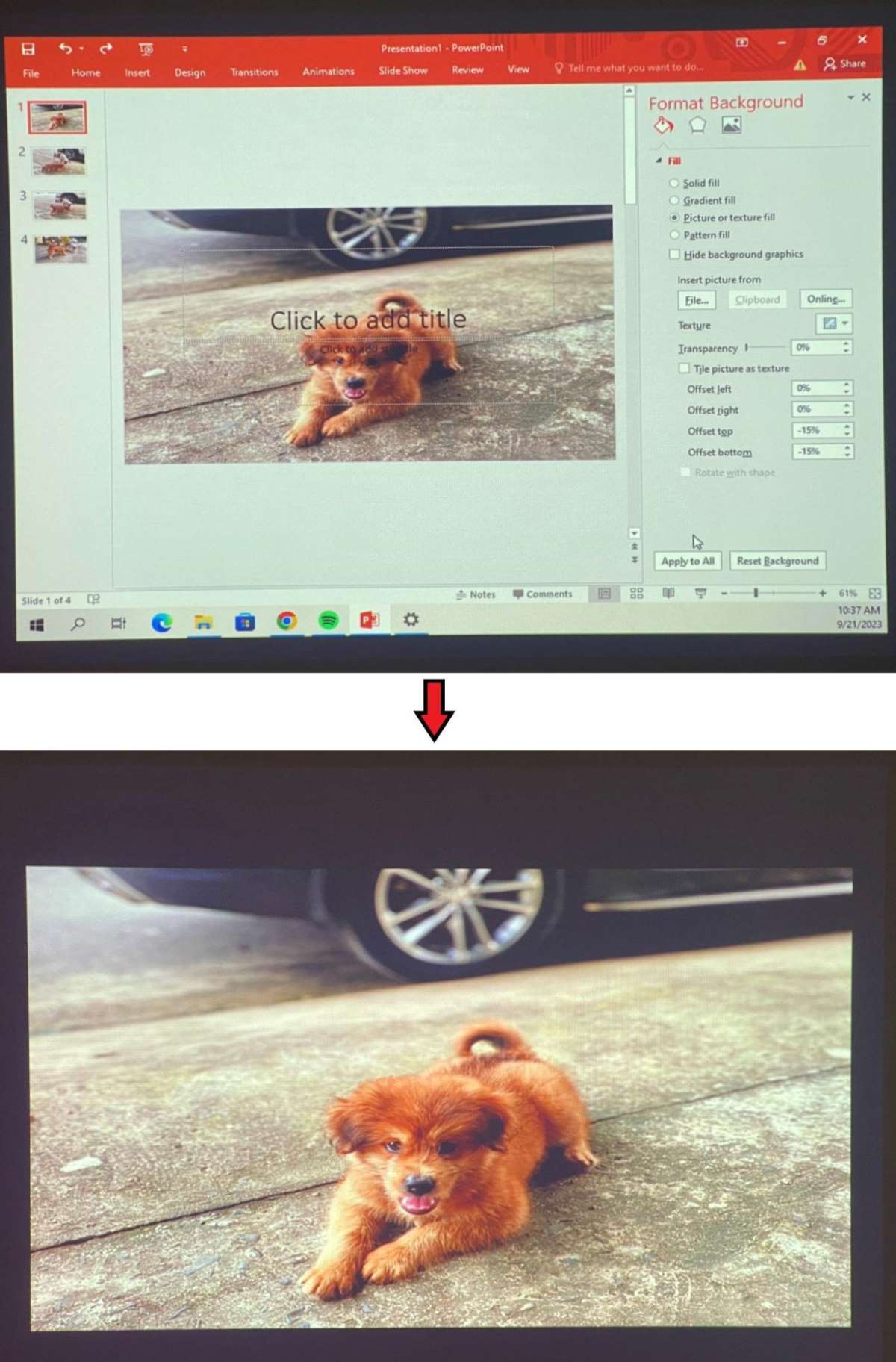
- Step 1: Determine and adjust the projector’s aspect ratio to match the content of your PowerPoint presentation to avoid distortion.
- Step 2: Change your PowerPoint slide size to the aspect ratio that aligns with your projector, using the Custom Slide Size option in the Design tab.
- Step 3: Enter full-screen mode for your PowerPoint slides by using the Slide Show button, pressing F5, or selecting options from the Slide Show ribbon.
In this guide, I will teach you three simple steps in sequence to make your PowerPoint presentation full-screen on any projector.
Let’s get started!
Quick Navigation
How To Make PowerPoint Full Screen On A Projector Properly
Step 1: Adjusting the Aspect Ratio on Your Projector
Setting your projector’s aspect ratio is vital after connecting your projector to your laptop or desktop computer for presentation.
The step helps ascertain the PowerPoint slide’s outline so that the images don’t look squeezed, stretched, etc.
The aspect ratio is foundational to the entire arrangement. If it’s not set right, consider the basic footing to be wrong.
A 16:9 projector layout and 4:3 PowerPoint slide dimensions won’t be congruent. It will be akin to force-fitting a square into a rectangle.
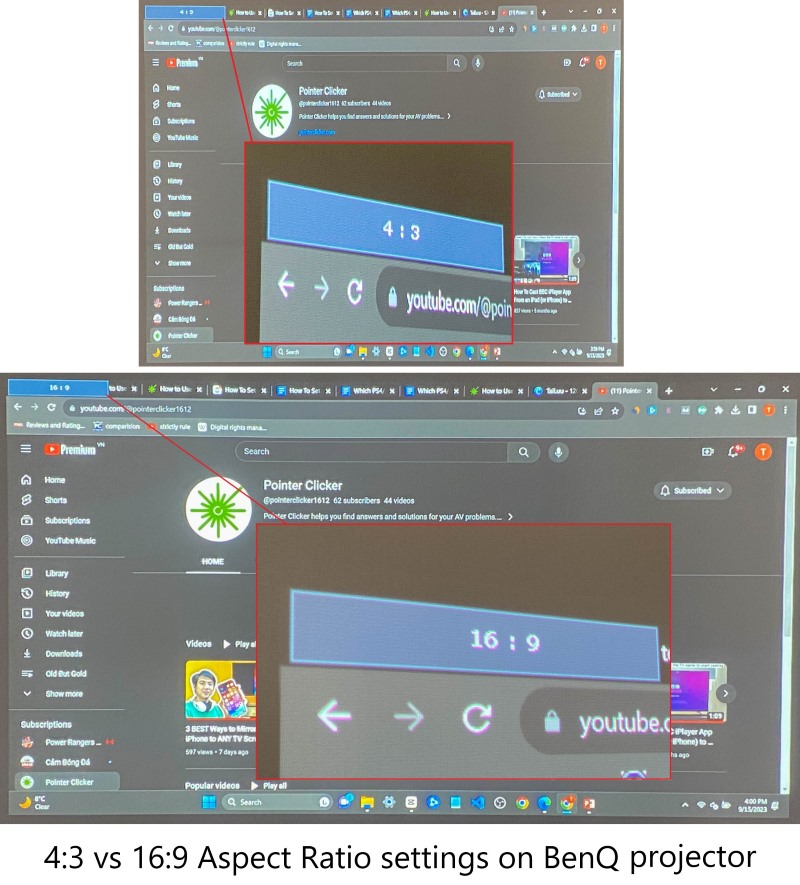
If you own a BenQ projector and want to learn about its aspect ratio, click here. For Epson projector owners, here is your guide.
Needless to say, the instructions provided shall apply to projectors of other brands, too.
If you don’t know what you’re doing or cannot manually change the aspect ratio, let the projector do it for you.
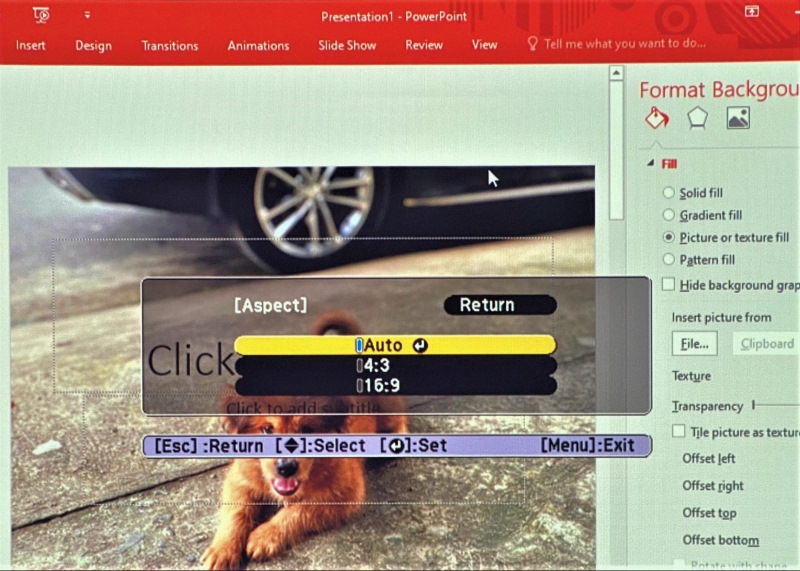
In other words, set its aspect ratio settings to Auto and let the device modify its native layout to match your PC or laptop’s content on its own.
To confirm, check if the projector did its job correctly or if the aspect ratios of your PowerPoint slide and projector match.
This step is to ensure no letterboxing or picture distortion issues in the event of the aspect ratios not matching.
Keep reading if you’d like to know more about the subject or learn how to match the aspect ratios.
Step 2: Match the Aspect Ratio of the Slide to the Projector for Optimal Display
Here are the steps:
Step 1: Open the PowerPoint file. Select Design from the top Ribbon menu.
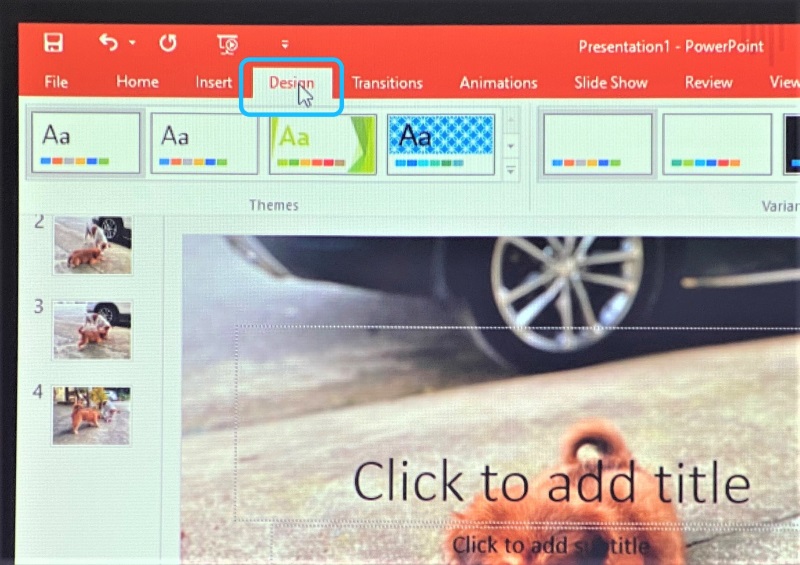
Step 2: Next, select Slide Size and then Custom Slide Size.
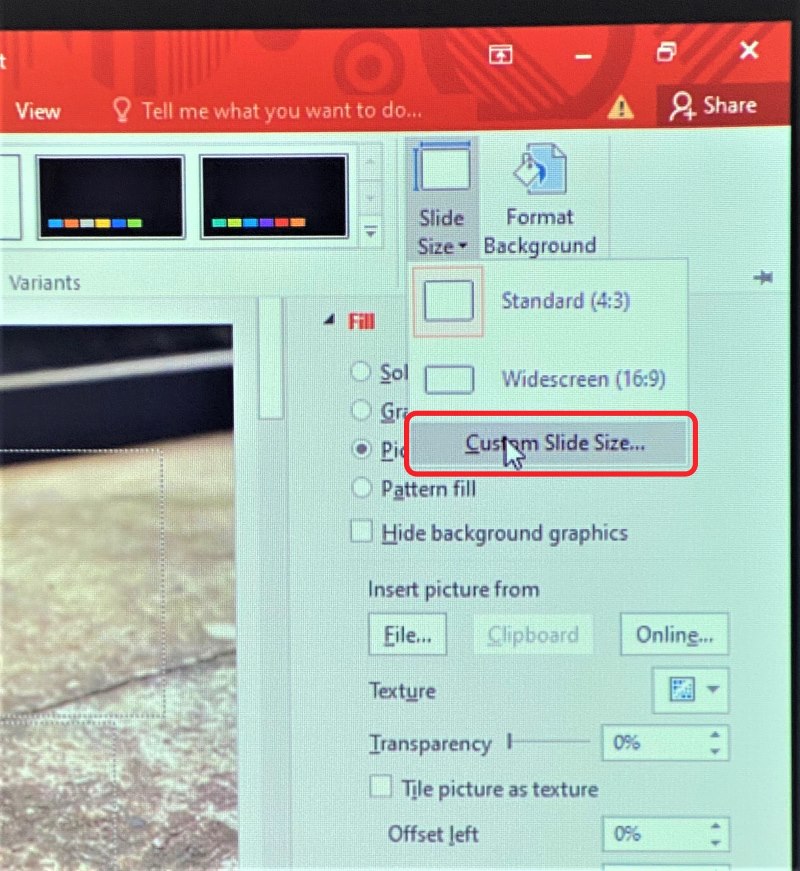
Step 3: Select an aspect ratio matching your projector’s aspect ratio and then hit OK. It’s On-Screen Show (16:9) in my case.
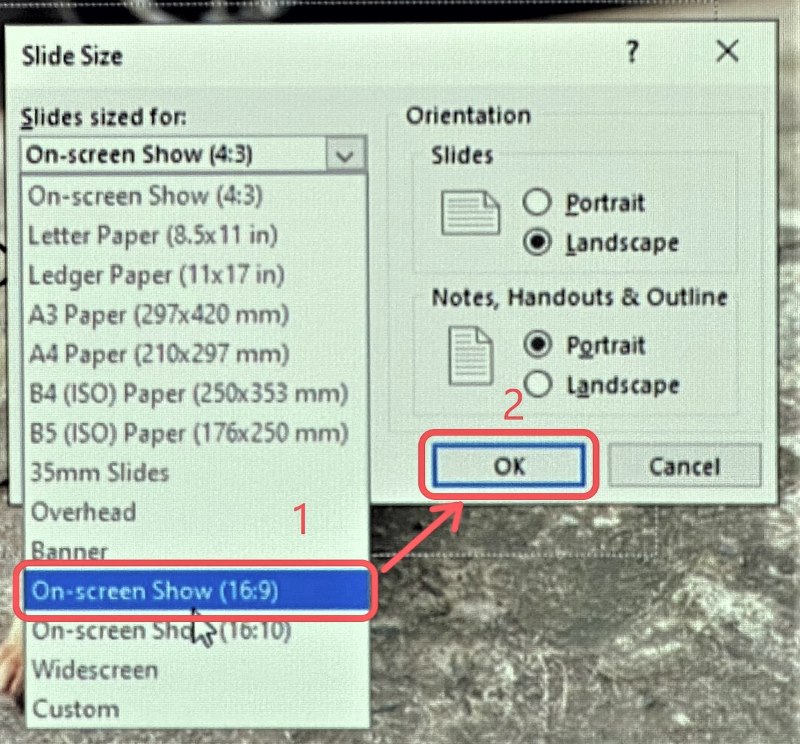
Step 4: Select the Ensure Fit feature to ensure the fresh slide’s size doesn’t chop any content out.

Once you’ve completed the above, go full-screen mode with your PowerPoint. Continue reading to learn how that’s done.
Step 3: Set the PowerPoint to Fullscreen Mode
There are different ways to go full-screen with your PowerPoint. Below are some veritable methods:
1. Hit the Slide Show key at your screen’s bottom right corner.

2. Or hit your keyboard’s F5 key.
3. You can also head to the ribbon menu at the top, select Slide Show, and pick between the self-explanatory From Current Slide or From Beginning options.
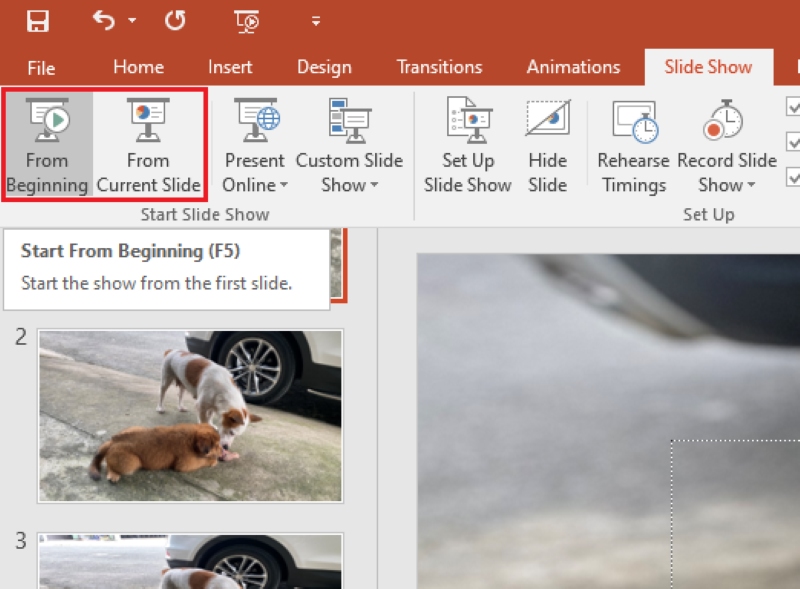
The PowerPoint slides should now appear on your projector screen in fullscreen mode, as pictured below.

Bonus: Presenter View Mode

PowerPoint’s full-screen mode provides a distraction-free viewing experience to the audience. But as the presenter, you may want access to the notes simultaneously.
To solve this conundrum, PowerPoint offers its Presenter View mode. The feature lets you see your presentation content and notes on the device while your audience only sees the slides.
In other words, you (the presenter) see slide notes, the next slide, the timer, etc. The audience will be oblivious to all the information at your disposal.
The notes and extra information facilitate organization, a smooth flow, and access to reference points for things to say next or when on a particular slide.
It’s a more modern or well-designed version of PowerPoint’s “normal view” or “window mode.”
To present your slides in the Presenter View mode, here are the steps (Note: You’ll need two monitors for the job):
Step 1: Open your PowerPoint file and choose Slide Show from the options above. Next, choose Use Presenter View.
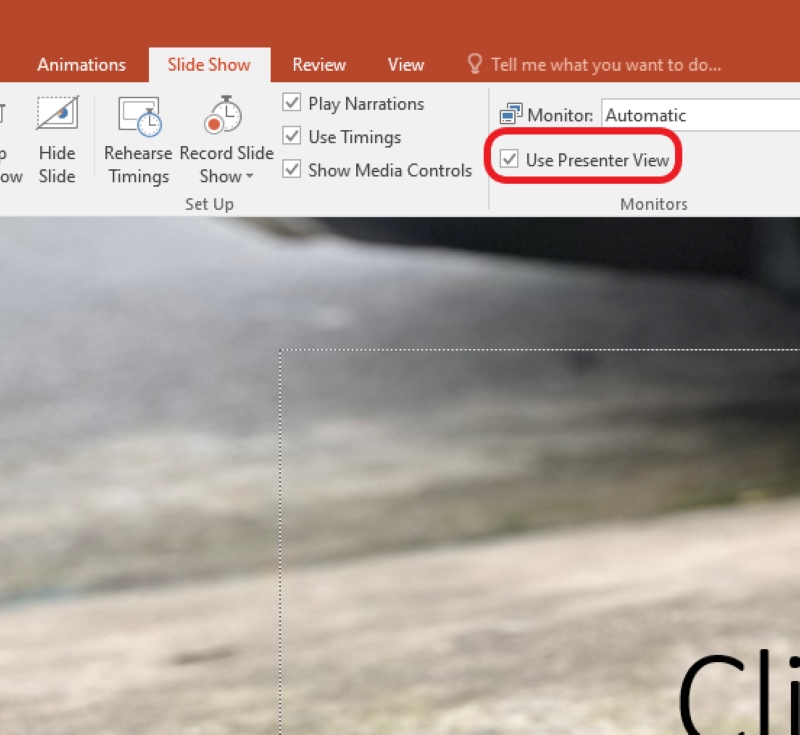
Step 2: Next, choose the screen for your presentation or set it as “Speaker View,” which is typically the Primary Monitor.
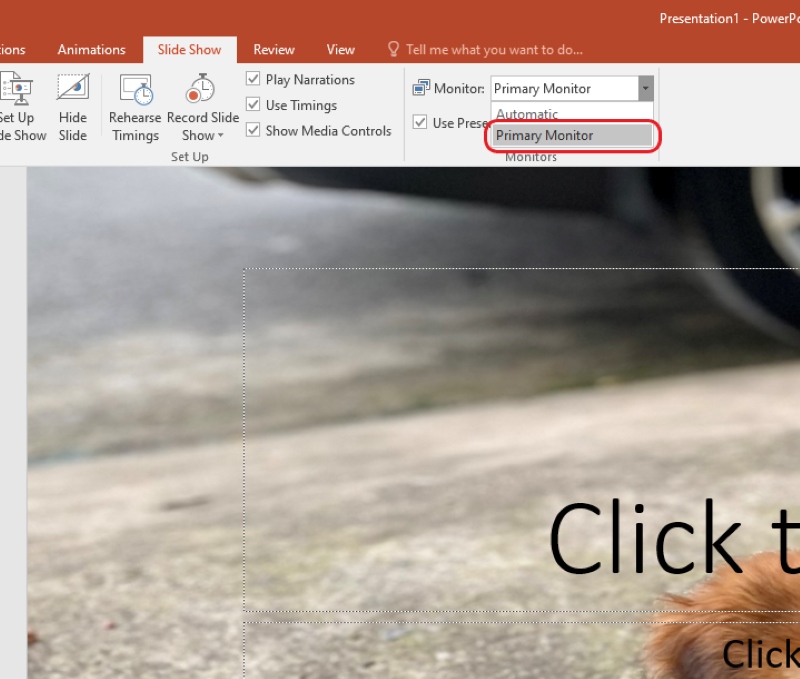
Step 3: Hit the Alt + F5 keys on the keyboard.
This setup will project the slide only on your projector screen. Your computer or laptop screen will showcase the data-rich layout, which includes speaker notes, following slide preview, etc.
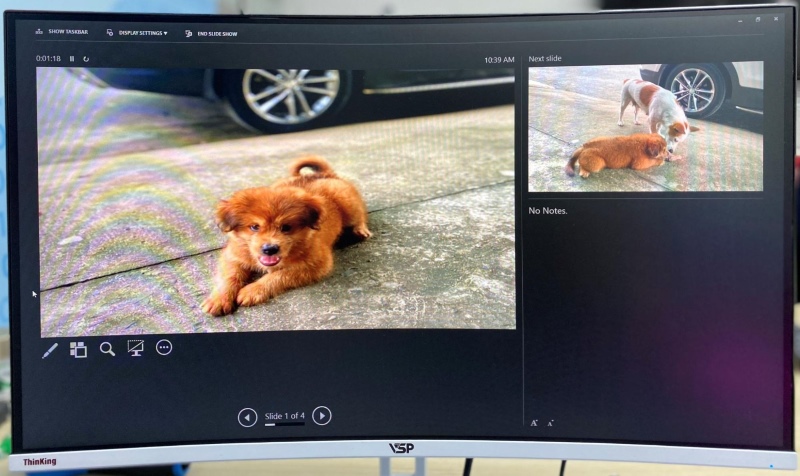 You should know your keyboard shortcuts well to truly excel at or extract the most out of the Presenter View mode.
You should know your keyboard shortcuts well to truly excel at or extract the most out of the Presenter View mode.
The knowledge will make you appear more confident and professional since you’d not be clumsy with the mouse and moving through slides seamlessly.
Conclusion
A full-screen PowerPoint presentation is vital to deliver a distraction-free and impactful presentation.
Although the option to encompass the whole screen with the slide is a primary PowerPoint feature, it may not work as seamlessly at times.
Or you may be struggling to enable the full-view mode when dealing with multiple screens, such as a laptop and a projector screen.
If you’re stuck too, the above methods hopefully offer you the solution and help you seamlessly switch between slides and the various presentation modes.
Catherine Tramell has been covering technology as a freelance writer for over a decade. She has been writing for Pointer Clicker for over a year, further expanding her expertise as a tech columnist. Catherine likes spending time with her family and friends and her pastimes are reading books and news articles.

